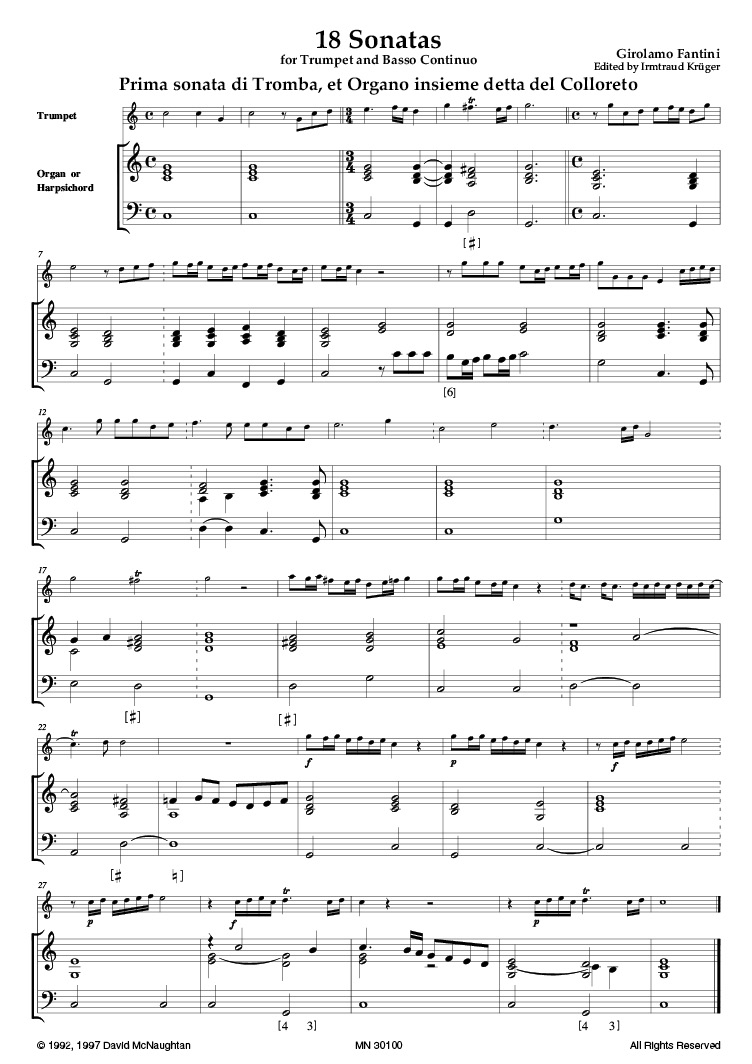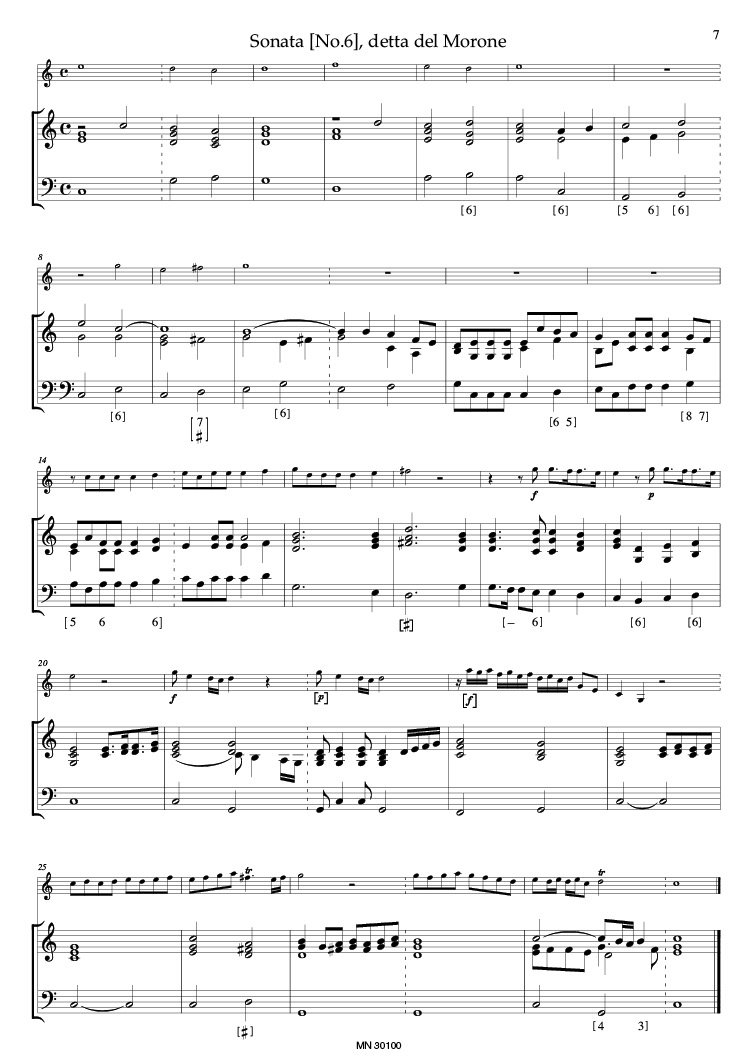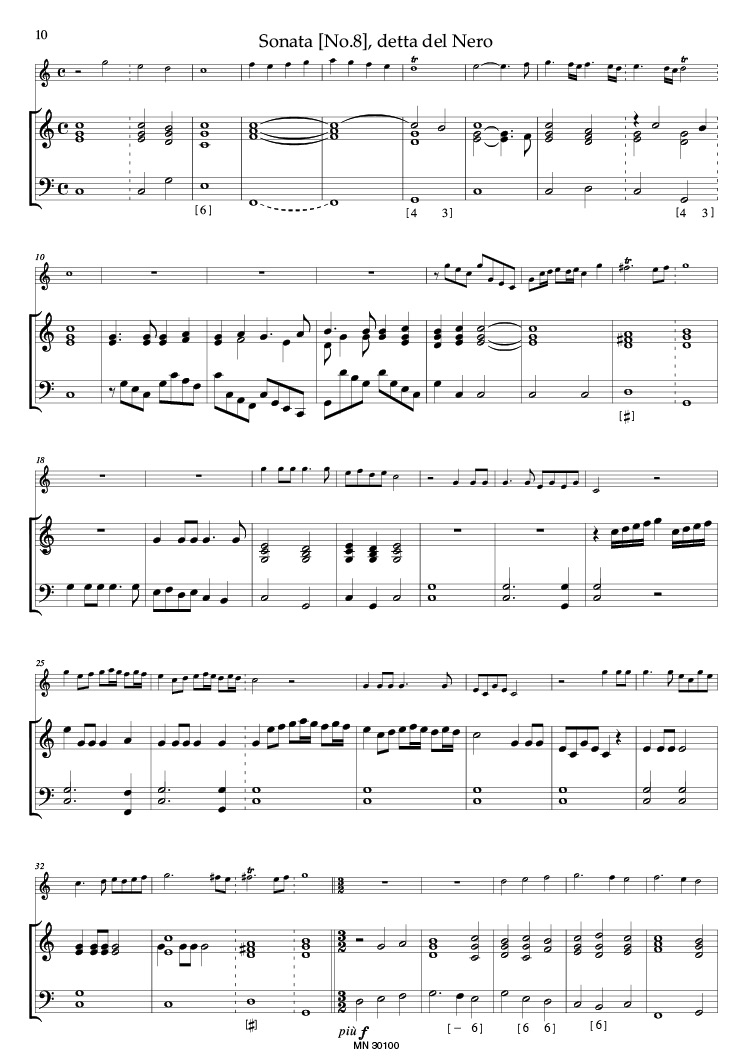
Fantini Eighteen Sonatas
Instrumentation: Trumpet and Basso continuo (Organ/Harpsichord, see below)Range: g' - c'''
Difficulty (I-VI): IV
Part for: Trumpet in C, Organ or Harpsichord
Series: Edward Tarr Brass
Editor: Irmtraud Krüger
According to the most recent research by Igino Conforzi, Girolamo Fantini was born in 1600 in Spoleto, perhaps on the 11th of February. In April 1631 he entered the service of the Grand Duke of Tuscany, Ferdinando II (reigned 1621-1670), as Chief Court Trumpeter ("trombetta maggiore"), receiving a new trumpet made of silver, two banners for the instrument, and a generous monthly salary of 10 scudi (the organist receiving 8 and the chapelmaster only 7). Fantini's reputation rests mainly on the fact that he was the author of one of the first trumpet methods, Modo per imparare a sonare di tromba, which he dedicated to the Grand Duke in 1638. This work contains not only the usual military signals, as is also the case with Cesare Bendinelli's method of 1614, but also the first compositions ever written for trumpet and keyboard instrument; Bendinelli's method contains so-called sonatas for 5 or 10-part trumpet ensemble instead.
We know of an historical concert performance given by Fantini. His accompanist, to be sure, was not a harpsichordist, but he was no less than the illustrious organist of St. Peter's in Rome, Girolamo Frescobaldi (1583-1643). Between November 1628 and April 1634, Frescobaldi had even been employed by the Grand Duke of Tuscany, where he probably will have become acquainted with the younger Fantini. Some time in the middle of 1634-8 Fantini gave a public concert together with Frescobaldi, who played an organ belonging to Cardinal Borghese. In a contemporary report it was even stated that he played his trumpet chromatically, not limiting himself to the notes of the harmonic series; but French trumpeters who were present complained about the dubious character of his sound on just these notes produced by artifice. However that may be, it is certainly not out of the question to suppose that works by Fantini himself were among those performed on that historic occasion. Works by Frescobaldi for trumpet and continuo, if they ever existed, have not survived.
This edition contains all the works from the Fantini method called "sonata", eighteen in all. In eight of them, the accompanying instrument is the organ. In the remaining ten, no keyboard instrument is specifically called for, but the harpsichord is probably meant. Our realization of the bass line takes the nature of these two respective instruments into account. In our edition, all eighteen sonatas have been numbered, beginning with those for trumpet and organ, since Fantini himself called the first of these "Sonata Prima".
At this early date in history, one should not expect "sonatas" to be long, complex compositions. The present works are in one movement, those with organ accompaniment being somewhat more developed than the others and often consisting of three parts. The rather light content of those with harpsichord accompaniment sometimes reminds us of popular tunes and can even take on a somewhat impish tone (Sonata No.12); some of these works, with a reiterated c in the bass, evoke reminiscences of processional music of the trumpeters' corps or the then popular organ battaglias (Nos. 14,15, and 17). A battaglia section is also to be found in the Sonata No. 8 for trumpet and organ. Otherwise, the works with organ accompaniment are in general somewhat more freely composed than the others and seem to be more appropriate to the atmosphere of the church.
These works were not conceived for performance with a reinforcing bass instrument such as cello, viola da gamba, or the like because their bass line, although it does support the melodic line, hardly displays a second melodic line carrying out a dialogue with the upper one. The accompaniment of the 10 sonatas with unspecified keyboard instrument could be carried out not only by a harpsichord alone, but also by several instruments, alone or together: harpsichords, organs, regals, and members of the lute family (theorboes, chittarroni, etc.). If one has decided on the harpsichord as the sole accompanying instrument, one could think of the title page of Fantini's method and have the trumpet be muted. On historical brass instruments the insertion of a mute raises the pitch by a whole step, so that these sonatas should then be played in D rather than C.



